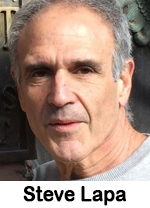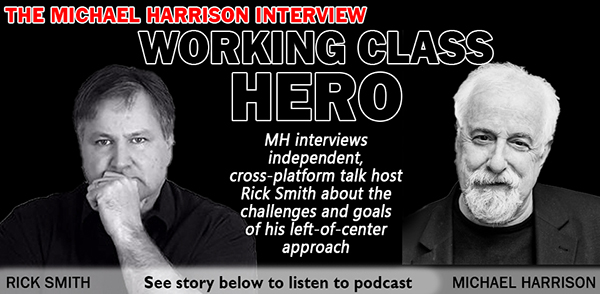Neutraliars: The Platforms That Edit Like Publishers but Hide Behind Neutrality
By Matthew B. Harrison
TALKERS, VP/Associate Publisher
Harrison Media Law, Senior Partner
Goodphone Communications, Executive Producer
 In the golden age of broadcasting, the rules were clear. If you edited the message, you owned the consequences. That was the tradeoff for editorial control. But today’s digital platforms – YouTube, X, TikTok, Instagram – have rewritten that deal. Broadcasters and those who operate within the FCC regulatory framework are paying the price.
In the golden age of broadcasting, the rules were clear. If you edited the message, you owned the consequences. That was the tradeoff for editorial control. But today’s digital platforms – YouTube, X, TikTok, Instagram – have rewritten that deal. Broadcasters and those who operate within the FCC regulatory framework are paying the price.
These companies claim to be neutral conduits for our content. But behind the curtain, they make choices that mirror the editorial judgment of any news director: flagging clips, muting interviews, throttling reach, and shadow banning accounts. All while insisting they bear no responsibility for the content they carry.
They want the control of publishers without the accountability. I call them neutraliars.
A “neutraliar” is a platform that claims neutrality while quietly shaping public discourse. It edits without transparency, enforces vague rules inconsistently, and hides bias behind shifting community standards.
Broadcasters understand the weight of editorial power. Reputation, liability, and trust come with every decision. But platforms operate under a different set of rules. They remove content for “context violations,” downgrade interviews for being “borderline,” and rarely offer explanations. No appeals. No accountability.
This isn’t just technical policy – it’s a legal strategy. Under Section 230 of the Communications Decency Act, platforms enjoy broad immunity from liability related to user content. What was originally intended to allow moderation of obscene or unlawful material has become a catch-all defense for everything short of outright defamation or criminal conduct.
These companies act like editors when it suits them, curating and prioritizing content. But when challenged, they retreat behind the label of “neutral platform.” Courts, regulators, and lawmakers have mostly let it slide.
But broadcasters shouldn’t.
Neutraliars are distorting the public square. Not through overt censorship, but through asymmetry. Traditional broadcasters play by clear rules – standards of fairness, disclosure, and attribution. Meanwhile, tech platforms make unseen decisions that influence whether a segment is heard, seen, or quietly buried.
So, what’s the practical takeaway?
Don’t confuse distribution with trust.
Just because a platform carries your content doesn’t mean it supports your voice. Every upload is subject to algorithms, undisclosed enforcement criteria, and decisions made by people you’ll never meet. The clip you expected to go viral. Silenced. The balanced debate you aired. Removed for tone. The satire? Flagged for potential harm.
The smarter approach is to diversify your presence. Own your archive. Use direct communication tools – e-mail lists, podcast feeds, and websites you control. Syndicate broadly but never rely solely on one platform. Monitor takedowns and unexplained drops in engagement. These signals matter.
Platforms will continue to call themselves neutral as long as it protects their business model. But we know better. If a company edits content like a publisher and silences creators like a censor, it should be treated like both.
And when you get the inevitable takedown notice wrapped in vague policy language and polished PR spin, keep one word in mind.
Neutraliars.
Matthew B. Harrison is a media and intellectual property attorney who advises radio hosts, content creators, and creative entrepreneurs. He has written extensively on fair use, AI law, and the future of digital rights. Reach him at HarrisonMediaLaw.com or read more at TALKERS.com.



 X – which most people I hear still call “Twitter” – is a great way to attract new ears.
X – which most people I hear still call “Twitter” – is a great way to attract new ears.
 Twitter. In the 2024 Infinite Dial, 19% of the total population in the U.S. are using X – a 30% drop. Edison says, “While The Infinite Dial has recorded many incremental changes over its long history, a 30% change in any metric year-over-year is incredibly rare and noteworthy, acknowledging that in 2022 and 2023 the survey referred to the service as ‘Twitter’ and in 2024 it referred to the service as ‘X (formerly known as Twitter).’ Keep in mind this is not a measure of subscribers or Twitter/X accounts, but a measure of people who say they are ‘currently ever’ using the service. In addition to this overall usage drop, Twitter/X saw declines in monthly and weekly usage.”
Twitter. In the 2024 Infinite Dial, 19% of the total population in the U.S. are using X – a 30% drop. Edison says, “While The Infinite Dial has recorded many incremental changes over its long history, a 30% change in any metric year-over-year is incredibly rare and noteworthy, acknowledging that in 2022 and 2023 the survey referred to the service as ‘Twitter’ and in 2024 it referred to the service as ‘X (formerly known as Twitter).’ Keep in mind this is not a measure of subscribers or Twitter/X accounts, but a measure of people who say they are ‘currently ever’ using the service. In addition to this overall usage drop, Twitter/X saw declines in monthly and weekly usage.”  his CBS Sports Radio-syndicated program will cease its video simulcast with CBS Sports and that simulcast will move to X (formerly Twitter) soon. Rome had nothing but praise for CBS Sports and added that the video simulcast will disappear for a period before resurfacing on X at a date yet to be determined. There are no reported changes coming to the radio program itself.
his CBS Sports Radio-syndicated program will cease its video simulcast with CBS Sports and that simulcast will move to X (formerly Twitter) soon. Rome had nothing but praise for CBS Sports and added that the video simulcast will disappear for a period before resurfacing on X at a date yet to be determined. There are no reported changes coming to the radio program itself.  Survey says nearly half of all Americans over 13, nearly 135 million, listen to spoken word formats. The growth curve boasts an eye opening 52% jump in time spent listening at home.
Survey says nearly half of all Americans over 13, nearly 135 million, listen to spoken word formats. The growth curve boasts an eye opening 52% jump in time spent listening at home. video saying it violates its community guidelines that “prohibit linking to content containing manifestos from individuals who have committed violent attacks.” Crowder issued a notice on X regarding the removal of the content, saying, “YOU determine what matters. YOU determine the content. Not YouTube, not the rest of BigTech, not their lackies, and not a gaggle of sponsors who don’t have the b***s to stand behind the kind of content you actually want to see.” According to a report by Newsweek, “The Metro Nashville Police Department has not confirmed that the screenshots shared by Crowder are Hale’s manifesto. A department spokesperson told Newsweek Monday that police were ‘unable to confirm the authenticity of what has been released, although we are looking into that at this very moment.’”
video saying it violates its community guidelines that “prohibit linking to content containing manifestos from individuals who have committed violent attacks.” Crowder issued a notice on X regarding the removal of the content, saying, “YOU determine what matters. YOU determine the content. Not YouTube, not the rest of BigTech, not their lackies, and not a gaggle of sponsors who don’t have the b***s to stand behind the kind of content you actually want to see.” According to a report by Newsweek, “The Metro Nashville Police Department has not confirmed that the screenshots shared by Crowder are Hale’s manifesto. A department spokesperson told Newsweek Monday that police were ‘unable to confirm the authenticity of what has been released, although we are looking into that at this very moment.’” 